Anderson, Lucinda

Lucinda “Cindy” Anderson discusses her work as a business manager and instructor at the Bridgeport Cultural Arts Center, a community learning center dedicated to offering children and adults instruction in a variety of artistic media such as painting and drawing, photography, music, dance, sculpture, writing and much more. A.B.C.D (Action for Bridgeport Community Development) spearheaded the formation of the Center and procured funding for its programs.
e center.
Anderson recalls her hiring and the other staff members and A.B.C.D. officials who ran the Center. She considers her work at the Arts Center to be the best job she ever had. She also names many of the talented students who came to the Center and their interactions with BCAC staff.
The Arts Center served as an important vehicle for self- expression and learning in the Bridgeport community and mirrored trends in the Black Arts movement taking place on a national level.
Black Smith, Michelle
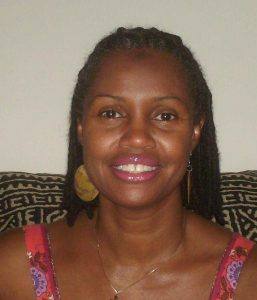
Michelle Black-Smith is interviewed about the Bridgeport Cultural Arts Center, a community learning center dedicated to offering children and adults instruction in a variety of artistic media such as painting and drawing, photography, music, dance, sculpture, writing and much more. A.B.C.D (Action for Bridgeport Community Development) spearheaded the formation of the Center and procured funding for its programs.
Ms. Black-Smith Tompkins was a young student who attended classes at the Center and enjoyed participating in several field trips offered to area museums. She reflects on the role of the Arts Center in broadening its participants’ horizons by exposing them to a variety of arts media from around the world and taking them to cultural institutions outside Bridgeport.
The Arts Center served as an important vehicle for self- expression and learning in the Bridgeport community and mirrored trends in the Black Arts movement taking place on a national level.
Black-Smith acted as scholar and curator for a Connecticut Humanities Council funded and History Center sponsored planning and implementation project and exhibition on the Bridgeport Cultural Arts Center, 2105-2018. Her interview is one of ten taken with Arts Center participants during this period.
Bridgeforth, Wendy
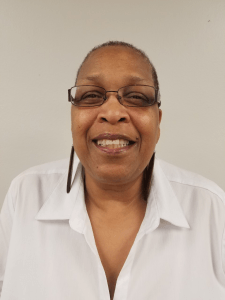
Artist Wendy Bridgeforth discusses her job as an instructor at the Bridgeport Cultural Arts Center, a community learning center dedicated to offering children and adults instruction in a variety of artistic media such as painting and drawing, photography, music, dance, sculpture, writing and much more. A.B.C.D (Action for Bridgeport Community Development) spearheaded the formation of the Center and procured funding for its programs.
Wendy taught painting, crafts, and other media during parts of the 1970s and 1980s, starting at the BCAC’s first location in downtown Bridgeport. She discusses her own arts education, the instruction provided to BCAC students, her growth as an artist, and the important social services provided by the Center to the Arts Center students. According to Bridgeforth, the combination of classes offered, the dedication and creativity of the instructors and students, and an organic outgrowth of social support created a unique atmosphere that could not be duplicated and remains the reason that BCAC participants had such a positive experience.
The Arts Center served as an important vehicle for self- expression and learning in the Bridgeport community and mirrored trends in the Black Arts movement taking place on a national level.
Cary, Patricia “Pattie”
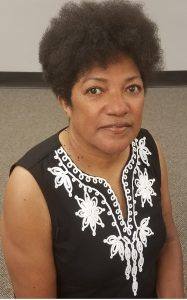
Artist Patricia “Patie” S. Cary discusses her work as an instructor at the Bridgeport Cultural Arts Center, a community learning center dedicated to offering children and adults instruction in a variety of artistic media such as painting and drawing, photography, music, dance, sculpture, writing and much more. A.B.C.D (Action for Bridgeport Community Development) spearheaded the formation of the Center and procured funding for its programs.
Cary reflects on the role the BCAC played in the community, the value of the arts, and the need for creative expression. She describes her own work as a self-taught artist, bringing her children with her to work at the Center, and the fact that her sons also became artists in different ways. Along with other staff, Cary often provided the young participants with counseling and even spoke to teachers and administrators at local schools on their behalf.
The Arts Center served as an important vehicle for self- expression and learning in the Bridgeport community and mirrored trends in the Black Arts movement taking place on a national level.
Gardner, Teddy Daniel
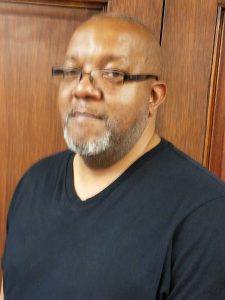
Teddy Daniel Gardner discusses his time as student at the Bridgeport Cultural Arts Center, a community learning center dedicated to offering children and adults instruction in a variety of artistic media such as painting and drawing, photography, music, dance, sculpture, writing and much more. A.B.C.D (Action for Bridgeport Community Development) spearheaded the formation of the Center and procured funding for its programs.
Gardner reflects on the issues of race and curriculum and the importance of exposing children to African and Latin American history and culture. According to Gardner, the Arts Center had a lasting impact on its participants. Through the Arts Center, he became a life long photographer and developed an appreciation for creative pursuits.
The Arts Center served as an important vehicle for self- expression and learning in the Bridgeport community and mirrored trends in the Black Arts movement taking place on a national level.
Grant, Ryan
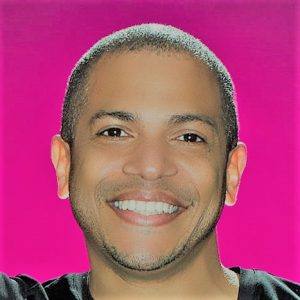
Grant discusses his participation in the Bridgeport Cultural Arts Center, a community learning center dedicated to offering children and adults instruction in a variety of artistic media such as painting and drawing, photography, music, dance, sculpture, writing and much more. A.B.C.D (Action for Bridgeport Community Development) spearheaded the formation of the Center and procured funding for its programs.
Grant spent a great deal of time at the Arts Center as a youth because his mother, Pattie, was an instructor there. He remembers many of the instructors and other students very fondly. He had personal relationships with many of the instructors because his mother socialized with them. In his own career in social work, Grant has used the arts as a vital form of therapy — a process inspired from what he learned during his days at the arts center.
The Arts Center served as an important vehicle for self- expression and learning in the Bridgeport community and mirrored trends in the Black Arts movement taking place on a national level.
Stamats, Richard
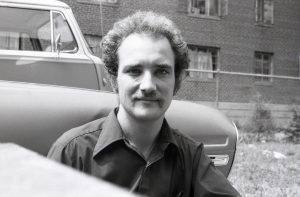
Photographer and ceramics maker Richard Stamats discusses his work as an instructor at the Bridgeport Cultural Arts Center, a community learning center dedicated to offering children and adults instruction in a variety of artistic media such as painting and drawing, photography, music, dance, sculpture, writing and much more. A.B.C.D (Action for Bridgeport Community Development) spearheaded the formation of the Center and procured funding for its programs.
Stamats covers his own education and skills as an artist and photographer and his early love of working with young people. He started at the Arts Center early on and comments on the Center’s move to the Gary Crooks Center on the city’s West End as well as the need for budgeting and procuring supplies. Stamats provides details on different Center administrators and instructors and the roles they played. Above all, he relates the vital role that the arts play in our lives and the impact involvement in the creative process can have on a population.
The Arts Center served as an important vehicle for self- expression and learning in the Bridgeport community and mirrored trends in the Black Arts movement taking place on a national level.
Williams, Cyril Lamont
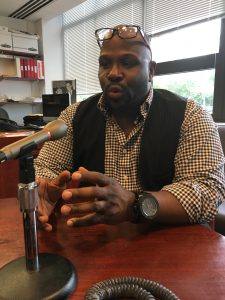
Musician Cyril Lamont Williams discusses his participation in the Bridgeport Cultural Arts Center, a community learning center dedicated to offering children and adults instruction in a variety of artistic media such as painting and drawing, photography, music, dance, sculpture, writing and much more. A.B.C.D (Action for Bridgeport Community Development) spearheaded the formation of the Center and procured funding for its programs.
Williams considers the significance of the Arts Center, located at the Gary Crooks Community Center, to the residents of the P,T, Barnum public housing complex and the positive influence it exerted on people’s lives and the neighborhood in general. He describes his extensive musical activities at the Center where he learned to play a variety of drums, the saxophone, piano, and more and his exposure to Latin culture and artistic traditions outside his own African American experiences. He cites his instruction at the Arts Center, his experience performing, and his competition with other students there as the main reason he was well prepared to play in his high school band. He reflects on the relationship between poverty and identity, particularly for his neighbors how the Arts Center helped him forge a path in life to become the person he is today.
The Arts Center served as an important vehicle for self- expression and learning in the Bridgeport community and mirrored trends in the Black Arts movement taking place on a national level.
Williams, Ralph

Musician Ralph Williams is interviewed about the time he spent as an instructor at the Bridgeport Cultural Arts Center, a community learning center dedicated to offering children and adults instruction in a variety of artistic media such as painting and drawing, photography, music, dance, sculpture, writing and much more. A.B.C.D (Action for Bridgeport Community Development) spearheaded the formation of the Center and procured funding for its programs.
Mr. Williams specializes in jazz percussion, but taught his students musical genres from many parts of the world. He discusses the many great musicians he brought to the Arts Center, his recording career, and the importance of arts instruction for its young students.
The Arts Center served as an important vehicle for self- expression and learning in the Bridgeport community and mirrored trends in the Black Arts movement taking place on a national level. Ralph served as an instructor of music at the Arts Center and discusses the numerous other musicians he brought into the Center as instructors or students.
Williams, Yohuru

Professor Yohuru Williams discusses his participation in the Bridgeport Cultural Arts Center, a community learning center dedicated to offering children and adults instruction in a variety of artistic media such as painting and drawing, photography, music, dance, sculpture, writing and much more. A.B.C.D (Action for Bridgeport Community Development) spearheaded the formation of the Center and procured funding for its programs.
Professor Williams’ father, Ralph Williams, taught music at the Center and the young Dr. Williams attended classes there from the mid-1970s until its closing in 1989. In particular, he remembers sculpture and drum instruction and being impressed with some of his very talented peers who showed great promise early on as painters or musicians. As a professor of history and African American studies, Williams provides insightful analysis of the period in which the Arts Center operated and its relationship to larger socio-economic and political trends in American history.
The Arts Center served as an important vehicle for self- expression and learning in the Bridgeport community and mirrored trends in the Black Arts movement taking place on a national level.
